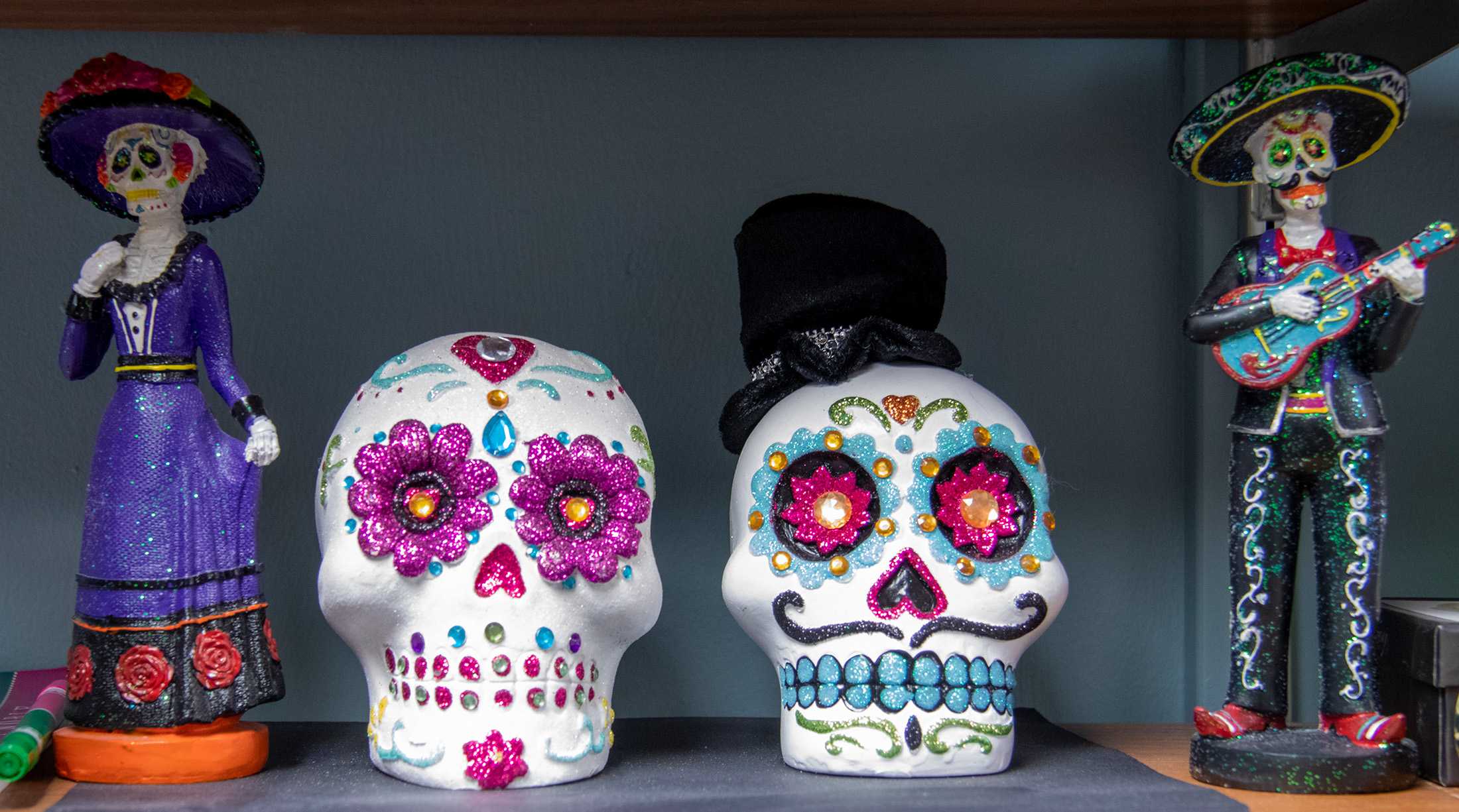Every year in October when jack-o’-lanterns and Halloween skeletons start popping up, so do ornate sugar skulls and painted skeletons from Mexico, but few understand the difference between Halloween and Dia de los Muertos, or Day of the Dead. At first glance, they both celebrate death, normally a grim subject, in a fun and colorful way. Both holidays involve people dressing up and eating delicious seasonal foods.
At a surface level, they seem similar. But what does the traditional Mexican holiday really mean?
Day of the dead is a traditional Mexican holiday, meant to honor deceased friends and family, celebrated from Oct. 31 to Nov. 2. Some believe the spirits of the deceased return, but most people celebrate the holidays as a way to preserve the memories of loved ones.
Fabian Alvarez, an English professor who also advises the Hilltoppers Organization for Latin American Students, or HOLAS. Alvarez grew up celebrating Day of the Dead and now brings some Mexican traditions to the Hill, like decorating sugar skulls with HOLAS members.
“It’s a processing of remembering,” Alvarez said. “So when you start involving yourself in that, you are intentionally remembering them so we don’t forget where we came from or people who died.”
Alvarez said Day of the Dead has its origin in both the Catholic holidays All Saints’ Day and All Souls Day as well as indigenous Meso-American spiritual practices. It’s been celebrated for more than 3,000 years, blending precolonial rituals with Spanish Catholic beliefs. The popular icon of the Day of the Dead is La Calavera Catrina, a brightly-painted skeleton woman, festooned with flowers and adorned with a feathered hat. According to a Day of the Dead website, she honors and protects those who have passed, similar to the Aztec death goddess Mictecacihuatl.
“I think a lot of people forget that it is a Catholic holiday,” Alvarez said. “There’s also a lot of pagan and indigenous influence. Pagan tradition gets woven into the celebration.”
Alvarez said Day of the Dead was not as prominent in his hometown, but was still an important holiday to his family.
“Growing up, we always went to the graveyard on All Souls Day, and my parents would clean up the graves,” Alvarez said. “All Saints’ Day, we would celebrate Saint Joseph, the patron saint of the church.”
Every family celebrates in their own way, but most will build an ofrenda — a brightly colored altar bearing pictures of dead friends and family, their favorite food, candles and often bright flowers such as marigolds. Mercedes Mendez, HOLAS president and senior from Tell City, Indiana, says that decorations for Day of the Dead are always brightly colored to be seen at night.
“The goal is you want everything to look pretty and presentable, not scary,” Mendez said.
Decorated sugar skulls are created and used to adorn the altar. Families will visit graveyards to clean and decorate relatives’ graves and to spend time at the graves. Mendez said La Calavera Catrina can also be found in murals and in effigy, or people will paint their faces in the same colorful skull pattern as a way to celebrate and emulate the spirit of the holiday.
“I think one of the big things is that it’s a celebration,” Mendez said. “It’s not something that is sad. It’s more about memory and representing those people who were once part of this life and have moved on to the second life.”
Being a full-time student, Mendez isn’t able to go home to celebrate the Day of the Dead. Her family travels back to Jalisco, Mexico, for the holiday. She said her family sometimes dresses as their deceased relatives in order to honor them and some will paint their faces in the style of La Calavera Catrina.
“My parents have always sent me pictures and videos,” Mendez said. “You go to church obviously, then spend basically the whole day in the graveyard. For some people, you drink. Where we’re from it’s more drinking wise because it’s a memory to the people who made tequila.”
For Daniela Rosales, a junior from Nashville, Day of the Dead is a way for people to get to know departed relatives she never had the chance to meet, like her deceased uncle. Her uncle died before she was born, but celebrating his memory on Day of the Dead allowed Rosales to feel like she knew him and that he was a part of her life.
“Me and him have really similar personalities, and the way I learned that was through the Day of the Dead, little by little I got stories from family members,” Rosales said.
Rosales said telling stories about the deceased, laying out their favorite foods and drinks and celebrating their lives allow families to still feel closer even after loved ones have passed away.
“I would encourage everyone to celebrate it even if they’re not Hispanic,” Rosales said. “It’s a way to know your family better.”



